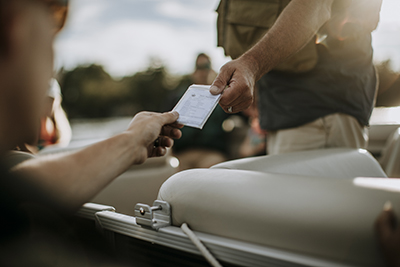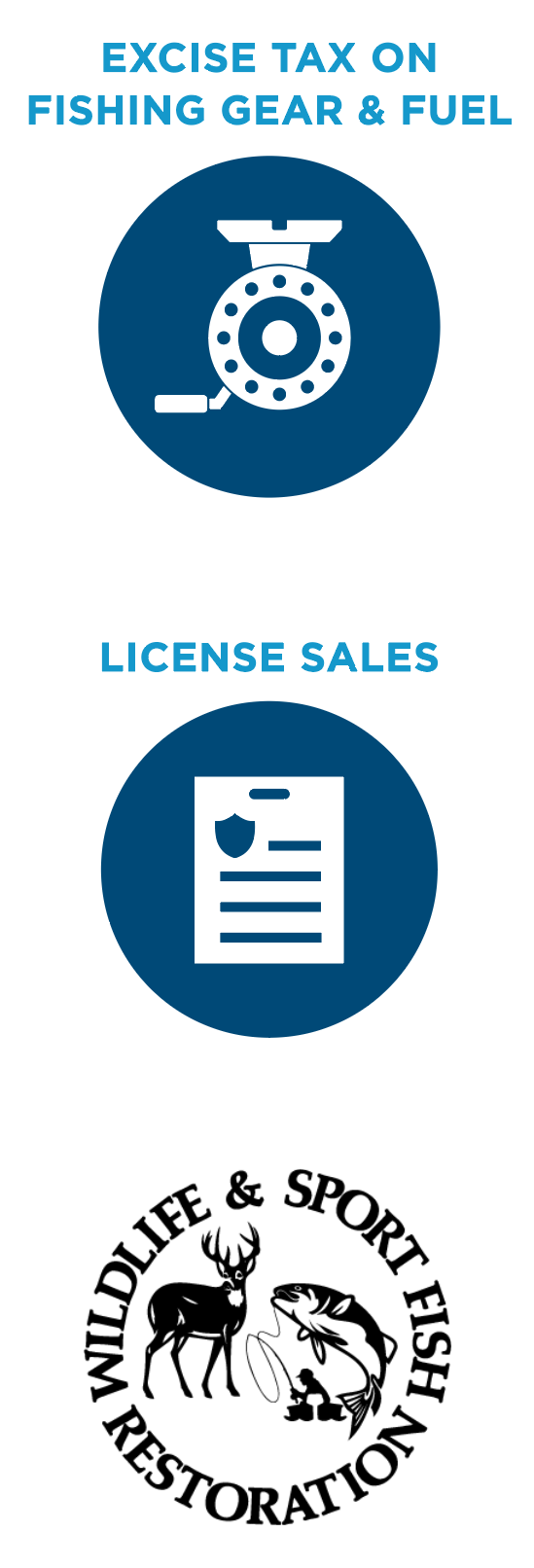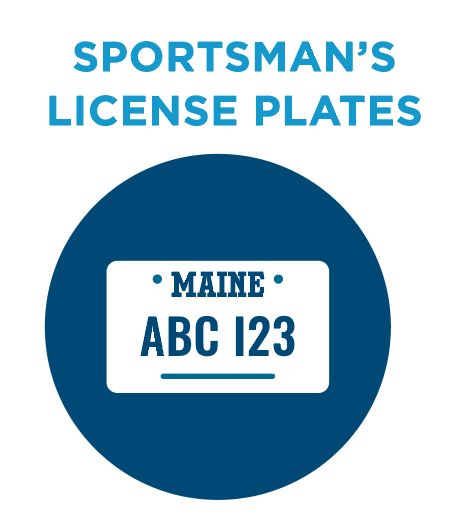Home → Fish & Wildlife → Fisheries → Funding Fisheries
Funding Fisheries

The Fisheries and Hatcheries Division receives funds from several sources including Maine fishing licenses, a tax placed on fishing gear and motorboat fuel, Maine’s sportsman’s license plates, federal funds, and more.
Federal Funds – Dingell-Johnson Act

Congress passed the Dingell-Johnson Act, also known as the Sport Fish Restoration Act, in 1950. The Act placed a federal excise tax on fishing gear, motorboat fuel, small engine fuel, and import duties to fund state-level fishery management. Funds are distributed through the U.S. Fish and Wildlife Service to state agencies based on land area and license sales. This program is an outstanding example of a “user pays - user benefits” program where, in this case, anglers and boaters are the users. Briefly, anglers and boaters are responsible for payment of fishing tackle, excise taxes, motorboat fuel taxes, and import duties on tackle and boats at the time of purchase. These monies are collected by the sport fishing industry, deposited in the Department of Treasury, and are allocated the following year to state agencies for sport fisheries and boating access projects. The many benefits provided by these projects complete the cycle between “user pays - user benefits”. This funding source currently supports most of the staff biologists in the Division’s Fisheries Section. Sport Fish Restoration funding requires a 25% match from the Department, which is mostly provided by a combination of license sales and state general fund revenues.
Federal Funds – State Wildlife Grant
The State Wildlife Grant program, administered by the U.S. Fish and Wildlife Service, was created in 2000 to provide additional funding to state agencies for the management of certain fish and wildlife that may not be eligible for Dingell-Johnson and Pittman Robertson (used for wildlife) funds. Funding is allocated to projects related to the recovery and conservation of declining fish and wildlife populations that have been identified as Species of Greatest Conservation Need in state wildlife action plans (SWAP). Maine’s SWAP was most recently revised for the 2015–2025 planning period (see, MDIFW 2015). Only those projects that directly involve species listed in the SWAP are eligible for funding, and funds are distributed with a 25–35% (varies depending on planning vs. implementation grants) match requirement from the state. This funding source is shared to support both fisheries and wildlife programs managed within the Bureau of Resource Management. Recent research on lake whitefish was funded through our State Wildlife Grant.
State Funds

State funds include revenue generated from the sale of MDIFW licenses and permits, and contributions from the State’s General Fund. Department revenues are constitutionally protected and are re-appropriated to MDIFW. While the percentage allocated to MDIFW from the General Fund can fluctuate slightly between budget cycles, the Department has typically received less than 1% (~$24 million) of Maine’s General Fund dollars annually over the past decade, of which approximately $3.5 to 4.5 million/year has been allocated to the Fisheries and Hatcheries Division. An additional 0.5 million/year in state revenues was budgeted in fiscal year 2022 to address rising costs of personnel services. Agency revenues and General Fund appropriations provide essential match to leverage federal funds, particularly Dingell-Johnson funds. The Department’s hatchery program is primarily funded with General Fund Dollars. Approximately 50% of all available funding supports hatchery operations and the other half supports all other Division operations.
Other Special Revenue Funds, Grants, and Donations

One important source of special revenue is derived from the sale and registration of sportsman’s license plates. Sportsman plates ($20 annually) provide additional funds to support endangered species conservation, fish hatcheries, landowner relations, and water access. This is the only annual funding source available to maintain fish hatchery infrastructure, although other one-time funding contributions have supported more substantial infrastructure projects.
The Division also routinely applies for grants available from state and private sectors to fund special projects. This supplemental funding allows us to conduct additional work that might not otherwise be completed. The Maine Outdoor Heritage Fund is an example of one such non-federal grant source. This Fund awards profits from the sale of Maine Outdoor Heritage lottery tickets to conservation-related projects through a competitive proposal format and has helped fund important special projects such as a recent lake whitefish study and the Stream Temperature Monitoring and Modeling Network. Donations from lake associations, angling groups, and other organizations and individuals are often used to fund smaller local projects. These funds are typically reserved for the management region from which they were received and can be used on more of an ad-hoc basis for Division-supported projects that the donors are interested in or affiliated with. Donation-funded projects are great ways to get local partners involved in managing and protecting fisheries resources, and they have allowed the Division to pursue projects that wouldn’t otherwise have been possible due to limited funding and/or staff time. A wonderful example is the “5 in 5” partnership with the Sebago Chapter of Trout Unlimited, where volunteers raised funds and provided support to eradicate invasive fish from five Southern Maine ponds and rebuild their native brook trout fisheries.
